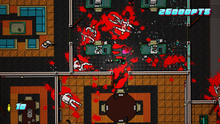
Quake II is a 1997 first-person shooter video game developed by id Software and published by Activision. It is the second installment of the Quake series, following Quake. The game's storyline is continued in its expansions, including one tying in Quake II and the first game, and Quake 4.

Narc is a 1988 run and gun arcade game designed by Eugene Jarvis for Williams Electronics and programmed by George Petro, Todd Allen, and Eugene Jarvis, with art by Jack Haeger, John Newcomer, and Lin Young. It was one of the first ultra-violent video games and a frequent target of parental criticism of the video game industry. The object is to arrest and kill drug offenders, confiscate their money and drugs, and defeat "Mr. Big". It was the first game in the newly restarted Williams Electronics coin-op video game division. Shortly before its release, Williams acquired the video and pinball divisions of Bally/Midway.

Dragon Spirit is a 1987 vertical-scrolling shooter arcade game developed and published by Namco. In North America, it was distributed by Atari Games. Controlling the dragon Amur, the player must complete each of the game's nine areas to rescue the princess Alicia from the demon Zawell. Similar to Namco's own Xevious, Amur has a projectile weapon for destroying air-based enemies and a bomb for destroying ground enemies. It ran on the Namco System 1 arcade board.
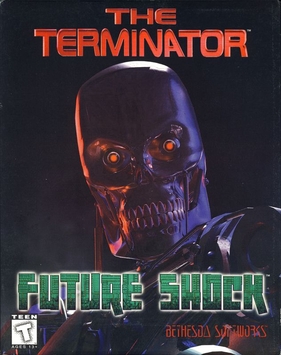
The Terminator: Future Shock is a first-person shooter video game based on The Terminator fictional universes developed and published by Bethesda Softworks in 1995. A sequel, Skynet, was released in 1996.
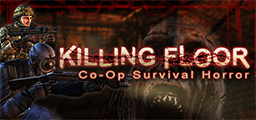
Killing Floor is a cooperative first-person shooter video game developed and published by Tripwire Interactive. It was originally released as an Unreal Tournament 2004 mod in 2005. A full retail release followed on May 14, 2009, for Microsoft Windows, and for OS X on May 5, 2010. A version for Linux was released via Steam in November 2012.

Tom Clancy's Splinter Cell: Blacklist is a 2013 stealth action-adventure video game developed by Ubisoft Toronto and published by Ubisoft. The game is the sequel to Splinter Cell: Conviction and the seventh installment of the Splinter Cell series. Players control Sam Fisher, a highly trained operative working for the Fourth Echelon, in a mission to stop the Engineers, a group of terrorists which is trying to coerce the United States into recalling all of its troops stationed abroad. The gameplay is similar to its predecessors, with players tasked with completing objectives and defeating enemies. Blacklist marks the return of the asymmetrical multiplayer mode Spies vs. Mercs, which was introduced in Pandora Tomorrow.

Hotline Miami is a 2012 top-down shooter game developed by Dennaton Games and published by Devolver Digital. The player assuming the role of an unnamed silent protagonist—dubbed "Jacket" by fans—while committing numerous massacres against the local Russian mafia at the behest of anonymous messages he had received. In each level of the game, the player is tasked with defeating every single enemy through any means possible, ranging from simple firearms and melee weapons, to more specific methods such as knocking enemies out with doors and executing enemies brutally. Before beginning each level, the player can choose from a variety of different masks, which offer unique abilities. The game is set in Miami in 1989, and primarily tells its story through cryptic dream cutscenes where mysterious masked figures berate Jacket for his actions and foreshadow upcoming events.
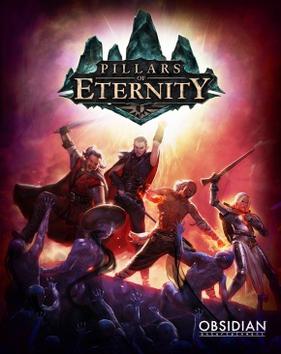
Pillars of Eternity is a role-playing video game developed by Obsidian Entertainment and published by Paradox Interactive. It was released for Microsoft Windows, OS X, and Linux on March 26, 2015. The game is a spiritual successor to the Baldur's Gate and Icewind Dale series, along with Planescape: Torment. Obsidian started a crowdfunding campaign on Kickstarter for it in September 2012. The campaign raised over US$4 million, which was the highest funded video game at the time. The game uses the Unity engine.
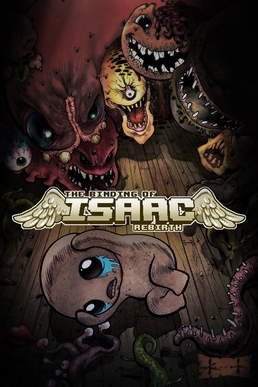
The Binding of Isaac: Rebirth is a roguelike indie game designed by Edmund McMillen and developed and published by Nicalis. Rebirth was released for Linux, Microsoft Windows, OS X, PlayStation 4 and PlayStation Vita in November 2014, for Xbox One, New Nintendo 3DS and Wii U in July 2015, for iOS in January 2017 and for Nintendo Switch in March 2017. The PlayStation 5 and Xbox Series X/S versions were released in November 2021.

Crypt of the NecroDancer is a roguelike rhythm game by Brace Yourself Games. The game takes fundamental elements of a roguelike dungeon exploration game and adds a beat-matching rhythm game set to an original soundtrack written by Danny Baranowsky. The player's actions are most effective when moving the character set to the beat of the current song and are impaired when they miss a beat, so it is necessary to learn the rhythmic patterns that the various creatures follow. The mixed-genre game includes the ability to import custom music, and the option to use a dance pad instead of traditional controllers or the keyboard. The game was released for Linux, OS X, and Windows in April 2015, being co-published by Klei Entertainment, for the PlayStation 4 and Vita in February 2016, for the Xbox One in February 2017, and for Nintendo Switch in February 2018. Crypt of the NecroDancer Pocket Edition, developed for iOS, was released in June 2016.
Borderlands is an action role-playing first-person looter shooter video game franchise set in a space Western science fantasy setting, created and produced by Gearbox Software and published by 2K for multiple platforms.

Killing Floor 2 is a first-person shooter video game developed and published by Tripwire Interactive, with later support from Saber Interactive. It is a sequel to 2009's Killing Floor. An early access version of the game was released for Microsoft Windows in April 2015, and the game was released in November 2016 for Windows and PlayStation 4 and August 2017 for Xbox One. The game utilizes Epic Games' Unreal Engine 3. A sequel, Killing Floor 3, is in development.
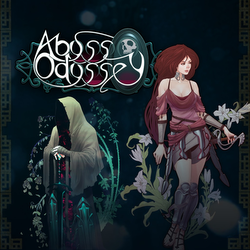
Abyss Odyssey is a platform action-adventure game developed by ACE Team and published by Atlus. It was released in July 2014 for the Xbox 360, PlayStation 3, and Microsoft Windows, and for the PlayStation 4 in July 2015.
Niklas Åkerblad, also known by his pseudonym El Huervo, is a Swedish artist and musician known for his oil paintings, watercolor paintings, and video game art. His portraits are known to be bold and vivid in nature. Åkerblad's wide body of work gained significant attention following the success of the video game Hotline Miami, for which he created the cover art, along with its successor Hotline Miami 2: Wrong Number. Åkerblad was also the sole artist for other video games, including Kometen and Else Heart.Break . Åkerblad is also widely known for regularly creating the cover art for Bandcamp Weekly, the official podcast of Bandcamp. Åkerblad is also a musician with an extensive discography and created soundtracks for several video games.

Midnight Animal was a planned fan-made standalone mod for the top-down shooter game Hotline Miami being developed by Spencer Yan. It would have taken place thirty years after the events of Hotline Miami 2: Wrong Number. During development, Yan was granted special permission from Dennaton Games to use the source code of the original games. Following a shift in the games direction, the game as well as Yan were met with severe backlash from several different communities over the alleged tracing of artwork. The mod was de facto cancelled by 2019. In August 2023, the source code of the project was published by Yan on GitHub.

Dead Cells is a 2018 roguelike-Metroidvania game developed by Motion Twin and Evil Empire, and published by Motion Twin. The player takes the role of an amorphous creature called the Prisoner. As the Prisoner, the player must fight their way out of a diseased island in order to slay the island's King. The player gains weapons, treasure and other tools through exploration of the procedurally-generated levels. Dead Cells features a permadeath system, causing the player to lose all items and other abilities upon dying. A currency called Cells can be collected from defeated enemies, allowing the player to purchase permanent upgrades.

Wolfenstein II: The New Colossus is a 2017 action-adventure and first-person shooter game developed by MachineGames and published by Bethesda Softworks. The eighth main entry in the Wolfenstein series and the sequel to 2014's Wolfenstein: The New Order, the game is set in an alternate history that takes place in 1961, following the Nazi victory in the Second World War. The story follows war veteran William "B.J." Blazkowicz and his efforts to fight against the Nazi regime in the United States. Gameplay mechanics are largely similar to those of The New Order, though the team introduced improvements such as allowing players to dual-wield any combination of weapons in the game. A binary choice in the prologue alters the game's entire storyline; some characters and small plot points are replaced throughout the timelines.

Katana Zero is a 2019 platform game created by the indie developer Justin Stander. Set in a dystopian metropolis, the neo-noir storyline follows Subject Zero, a katana-wielding assassin with amnesia who can slow down time and predict the future. Zero unravels his past while completing assassination contracts. Katana Zero features side-scrolling hack-and-slash gameplay in which the player attempts to kill all enemies in a level without being hit, using Zero's abilities to manipulate time, dodge attacks, and take advantage of environmental hazards. In between levels, the story is told in sequences where the player converses with non-player characters through dialogue trees.
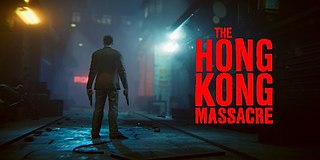
The Hong Kong Massacre is a top-down shooter video game developed and published by Vreski for Microsoft Windows and PlayStation 4 in January 2019, and for Nintendo Switch in December 2020. It is the first game to be developed by the studio. Set in 1990s Hong Kong, the game follows a former police detective as he sets out to exact revenge against the Triad for the death of his partner.

A Fistful of Gun: For a Few Gun More is a 2015 top-down shooter game developed by FarmerGnome and published by Devolver Digital. The game features eleven playable characters with differing weapons, attributes, and control schemes. Players engage in procedurally generated fights, clearing a wave of enemies before progressing. Power-ups and handicaps affect the player character's abilities, such as movement and shooting speed. Horses allow a character to move faster and endure one additional enemy shot. The game features a single-player story mode and multiplayer modes for cooperative and player-versus-player battles.

